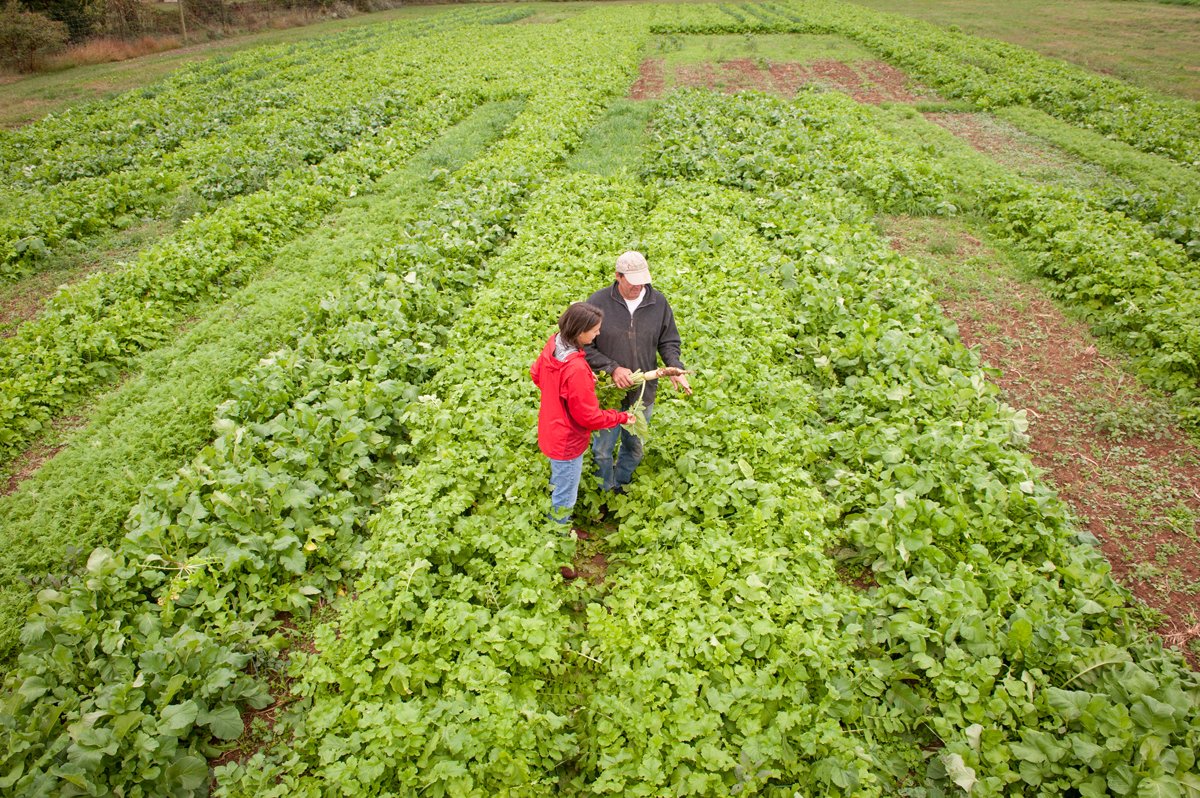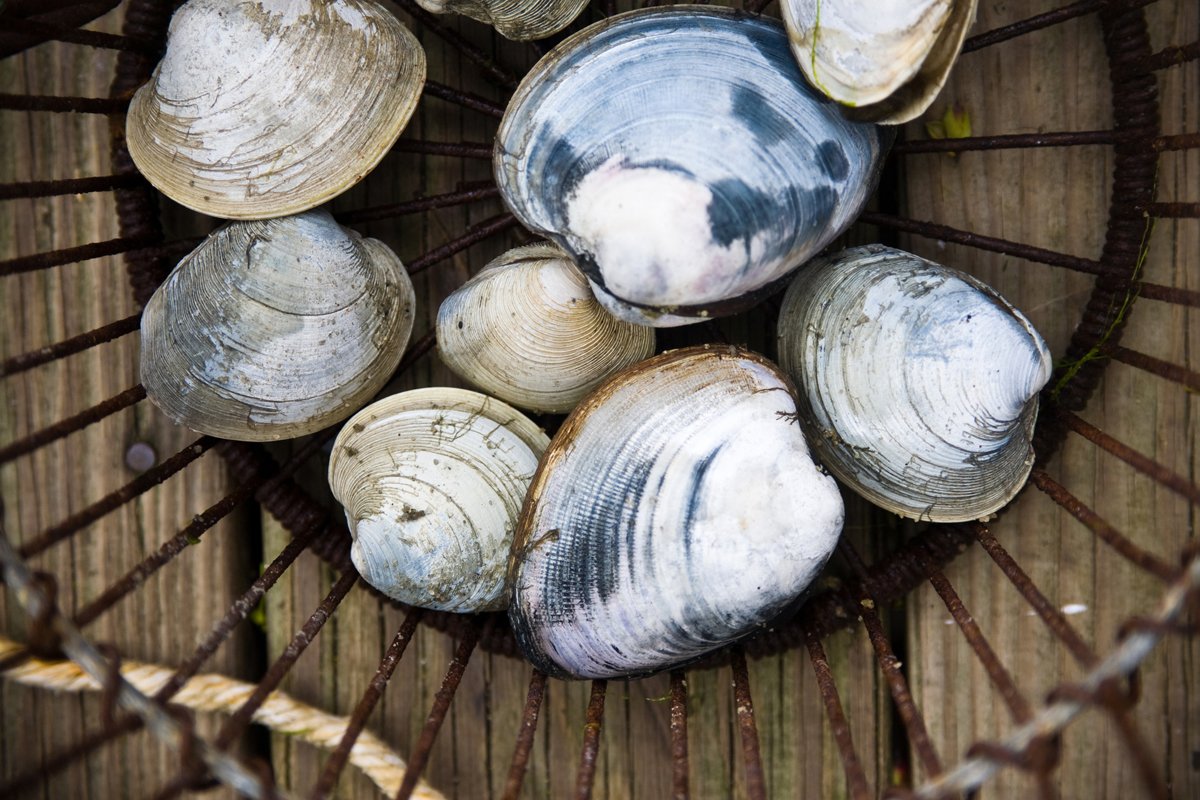Chris Grotegut has earned a reputation in the High Plains of Texas for farming practices that have helped replenish the region’s depleted aquifer. Just over a decade ago, he began converting his 11,000-acre farm to perennial native grassland to rebuild the health of his soil. He planted wheat and other grains directly into the meadows and relied solely on rainfall for much of his acreage. It soon proved worth it.
Water runs right off dry soil, but healthy soil is absorbent. The water table beneath Grotegut’s land didn’t just stabilize—it began to rise in some places. The regenerative farming practices allowed him to stop pumping groundwater on most of his land.
It’s easy to see why most farmers keep growing vast tracts of irrigated soy and corn over depleted aquifers . . . and experts say federally subsidized crop insurance is part of the problem.
Grotegut now sees this model of farming as the solution to the increasing desertification in the stretch of Texan desert that overlies the Ogallala Aquifer, the massive, quickly depleting underground reservoir that lies beneath the Great Plains, stretching from North Texas up to the Dakotas.
There is, however, one major drawback: Grotegut’s efforts to save water have left his crops largely uninsurable by the U.S. Federal Crop Insurance Program (FCIP), the multi-billion dollar program designed to protect and stabilize both farmers’ livelihoods and the U.S. food supply.
Even though his primary crop is wheat, one of FCIP’s most widely insured crops, his land management system disqualifies him from coverage. He was specifically denied coverage for harvested crops grown in the grasslands. Instead, his insurance is limited to a small plot where he grows many of the same crops in rows under pivots, a more legible system to FCIP.
And while he’s staying the course on regenerative practices, it’s easy to see why most farmers keep growing vast tracts of irrigated soy and corn over depleted aquifers instead.
A recent New York Times investigation found that the U.S. is rapidly running out of groundwater, including historic lows in parts of the Ogallala Aquifer. And experts say federally subsidized crop insurance is part of the problem. Irrigated crops receive higher payouts than dryland crops, while farmers often risk their coverage to engage in some of the most ecologically sound practices. Even if a crop is dying, farmers can still be required to irrigate it to maintain insurance.
Under the sweeping FCIP, administered by the U.S. Department of Agriculture’s (USDA) Risk Management Agency (RMA), most participating farmers receive what’s known as multi-peril insurance, receiving payments for crops that die from a range of causes, from flooding to fungal disease to extreme heat.
But there’s a catch: Farmers must also prove that they weren’t at fault for the failed harvest by following a specific, FDIC-approved set of standards called the Good Farming Practices. If farmers stray from these practices, they are penalized with either denied claims or reduced payments. And while the practices vary regionally, determined by approved local experts, they tend to favor commodity row agriculture.
Farmers can be penalized for under-fertilizing, under-watering, keeping a cover crop in the ground for too long, and not growing in distinct rows, according to interviews with farmers and insurance experts. Any practice that “could affect the amount and quality of the crop” can potentially violate the Good Farming Practices, according to RMA’s guidance.
Yet this often ends up excluding farming methods known to benefit the environment, such as intercropping, where multiple crops are planted together. This method is exemplified by the three sisters, the Indigenous practice of growing corn, beans, and squash together. If crops aren’t managed separately, in distinct rows, this practice is widely prohibited across regions.
“The crop insurance program is designed for a very linear thinker—for being able to check a box ‘yes’ or ‘no.’ The more creative ways of farming or adapting are really not feasible,” said Grotegut. “Even though what we’re doing is absolutely [moving in] the right direction, ecologically and long-term economically, it’s not doable if you’re following the rules.”
In Grotegut’s case, wheat grown in grasslands is certified as “mixed-species forage” by the USDA’s Farm Service Agency. It is certified organic and ends up in bakeries, but it’s also denied coverage as wheat.
The crop insurance program—funded by the premiums paid by farmers and an $11 billion subsidy so far in 2023—has been steadily expanding in size in recent years as persistent drought, wildfires, and flooding take a sharp toll on U.S. farms. Yet this funding is unevenly distributed to mainly benefit the largest 10 percent of farms. This narrow segment receives over half of all crop insurance subsidies, funding their capacity to further expand in a cycle of farmland consolidation associated with greater climate vulnerability.
Farmers can be penalized for under-fertilizing, under-watering, keeping a cover crop in the ground for too long, and not growing in distinct rows, according to interviews with farmers and insurance experts.
A USDA spokesperson told Civil Eats in a recent email that the agency is working to bridge the gap between its recommendations for climate-friendly practices and its coverage. “From providing greater flexibility for cover crops to covering innovative practices such as split application of nitrogen, RMA has made great strides in harmonizing conservation and crop insurance,” the spokesperson said.
However, farmers, advocates, and experts across the country say that FCIP has presented steep barriers to adopting ecological and climate-friendly practices, including onerous reporting requirements and strict rules for maintaining coverage. As lawmakers negotiate the 2023 Farm Bill, advocates see a window to reform its policies that are hindering the type of farming supported by the USDA’s own climate initiatives.
As it stands, the program often leaves farmers who conserve resources and mitigate climate change uninsured or underinsured, while subsidizing farmers who depend heavily on pumping groundwater and the use of synthetic fertilizers on marginalized land.
Caught Intercropping
The Biden administration has made historic investments in “climate-smart” farming practices generally aimed at increasing soil fertility, yet the FCIP can act as a barrier to these goals by disincentivizing some of the same practices.
“We’re incentivized to eliminate fallow, practice diverse rotations, and intercrop—all of these sorts of things by federal conservation agencies and paid to do so under contracts,” said Montana farmer Doug Crabtree. “At the same time, if you do those things, you’re ineligible for crop insurance, which is administered by a federal agency under the [U.S.] Department of Agriculture. It’s a ridiculous juxtaposition.”
For instance, the USDA’s Natural Resource Conservation Service (NRCS) promotes intercropping as a way to improve soil health and water retention. Yet under the most utilized insurance plan covering a range of risks, farmers can be denied an insurance claim if caught intercropping by an insurance adjuster. In fact, earlier this summer, Crabtree was accused of intercropping barley and peas, risking his coverage.
“[The adjusters] came out and inspected it and said, “Well, there’s barley in those peas, so you must have intercropped,” said Crabtree. “I said, ‘No, I did not intercrop. I had barley in that field last year.” While he claims most of the barley grew naturally from the seeds of last year’s crop, the adjusters questioned his intentions.
This seemingly minor dispute carries large consequences. Crabtree had a lower pea yield, which he attributes to the drought. “It became hot and dry again right when the peas, in particular, were trying to flower,” he said. However, in growing two crops at once, the insurance adjuster may consider him at fault. He’s still waiting on the final word from the insurance company.
“It’s based on this fallacy that intercropping automatically reduces the yield of the crop,” said Crabtree. “It’s simply not true.” In fact, a 2021 paper published in Nature Sustainability found that the practice increases yields by an average of 22 percent compared to monocrop systems, while improving soil health.
Another organic farmer who spoke to Civil Eats anonymously, for fear of risking his crop insurance coverage, admitted to covertly intercropping flax and chickpeas. He uses only a small amount of flax hoping it will be overlooked. It’s a combination that has been shown to reduce Ascochyta blight in chickpeas, which can lead to crop loss.














Like the story?
Join the conversation.